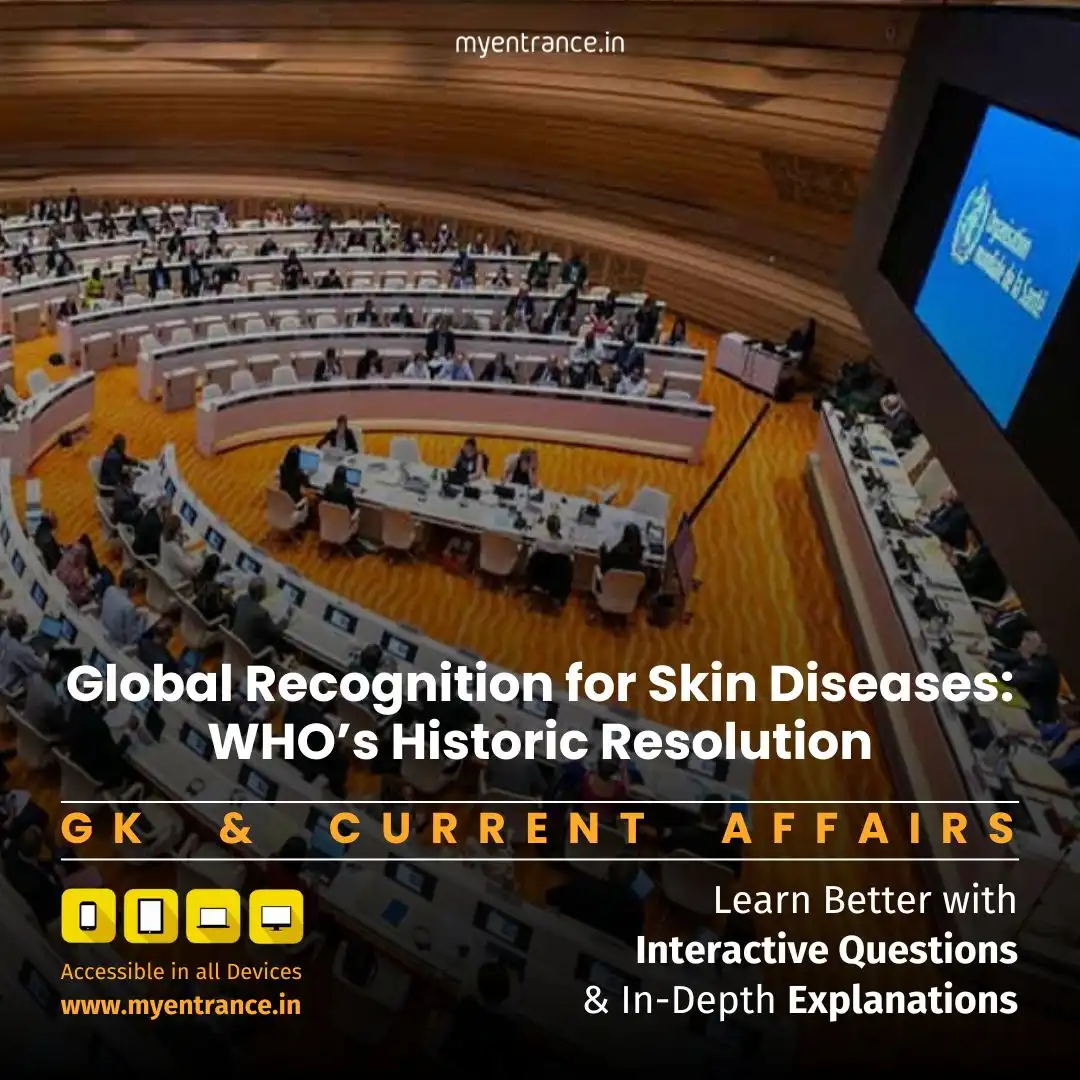Select Language
Global Recognition for Skin Diseases: WHO’s Historic Resolution Explained
Skin diseases affect nearly 1.9 billion people worldwide, yet they have long been overlooked in global health discussions. The 78th World Health Assembly (WHA) changed this narrative by passing a historic resolution that elevates skin health as a critical public health priority, especially in low- and middle-income countries (LMICs).
Why This Resolution Matters
For decades, skin diseases have been sidelined in global health policies, despite their widespread impact. The new resolution marks a turning point, acknowledging that skin health is not just about aesthetics but also human dignity, social equity, and economic stability.
Key Highlights of the Resolution:
Global Recognition: Skin diseases are now officially classified as a public health priority by the WHO.
Funding & Awareness: Calls for increased investment in research, treatment, and public health programs for skin conditions.
Stigma Reduction: Addresses the social and psychological burden of visible skin diseases.
Equitable Healthcare: Pushes for better dermatologic care integration in primary health systems, especially in LMICs.
The Long Road to Recognition
Skin diseases have historically been underfunded and misunderstood. Advocacy groups like the International League of Dermatologic Societies (ILDS) have worked tirelessly to bring attention to conditions like:
Psoriasis & eczema (chronic inflammatory diseases)
Leprosy & scabies (neglected tropical diseases)
Skin cancers & infections (often preventable but deadly if untreated)
Many patients, especially in South Asia, Africa, and Latin America, suffer due to lack of access to dermatologists, high treatment costs, and societal stigma. This resolution is a major step forward in changing that reality.
Challenges in Low-Resource Regions
Dr. Rashmi Sarkar, a leading dermatologist, emphasizes that skin diseases affect self-esteem, employability, and social inclusion. In countries like India, Nigeria, and Bangladesh, where dermatologic care is scarce, this resolution could:
✔ Improve training for skin specialists
✔ Encourage insurance coverage for skin treatments
✔ Boost public awareness campaigns
✔ Support research on skin conditions affecting darker skin tones
What Changes Can We Expect?
The resolution opens doors for:
Stronger national policies on skin health
Better funding for dermatology research
Affordable treatments through public health programs
Reduced stigma through education
For medical aspirants preparing for exams like NEET, AIIMS, or FMGE, this shift means more opportunities in dermatology and public health roles.
Sample Questions & Answers (Helpful for Competitive Exams)
Q1: What was the key outcome of the 78th World Health Assembly regarding skin diseases?
✅ Answer: The WHA unanimously adopted a resolution declaring skin diseases as a global public health priority, urging better funding and healthcare integration.
Q2: Which organization has been a major advocate for skin disease recognition?
✅ Answer: The International League of Dermatologic Societies (ILDS) has led global advocacy efforts.
Q3: How many people worldwide are affected by skin diseases?
✅ Answer: Approximately 1.9 billion people suffer from skin conditions.
Q4: Why is this resolution crucial for low-income countries?
✅ Answer: Many LMICs lack dermatologic care, leading to untreated conditions, stigma, and economic losses. The resolution pushes for better resources and policies.
Q5: Name two neglected skin diseases highlighted in the resolution.
✅ Answer: Leprosy and scabies are among the neglected skin diseases that need urgent attention.
Most Predicted Questions
Comprehensive study materials, Expert-guided tips & tricks, Mock tests and instant results.
Start your SSC, NIFT, NID, FDDI, PSC journey today with MyEntrance, your ultimate online coaching platform.








